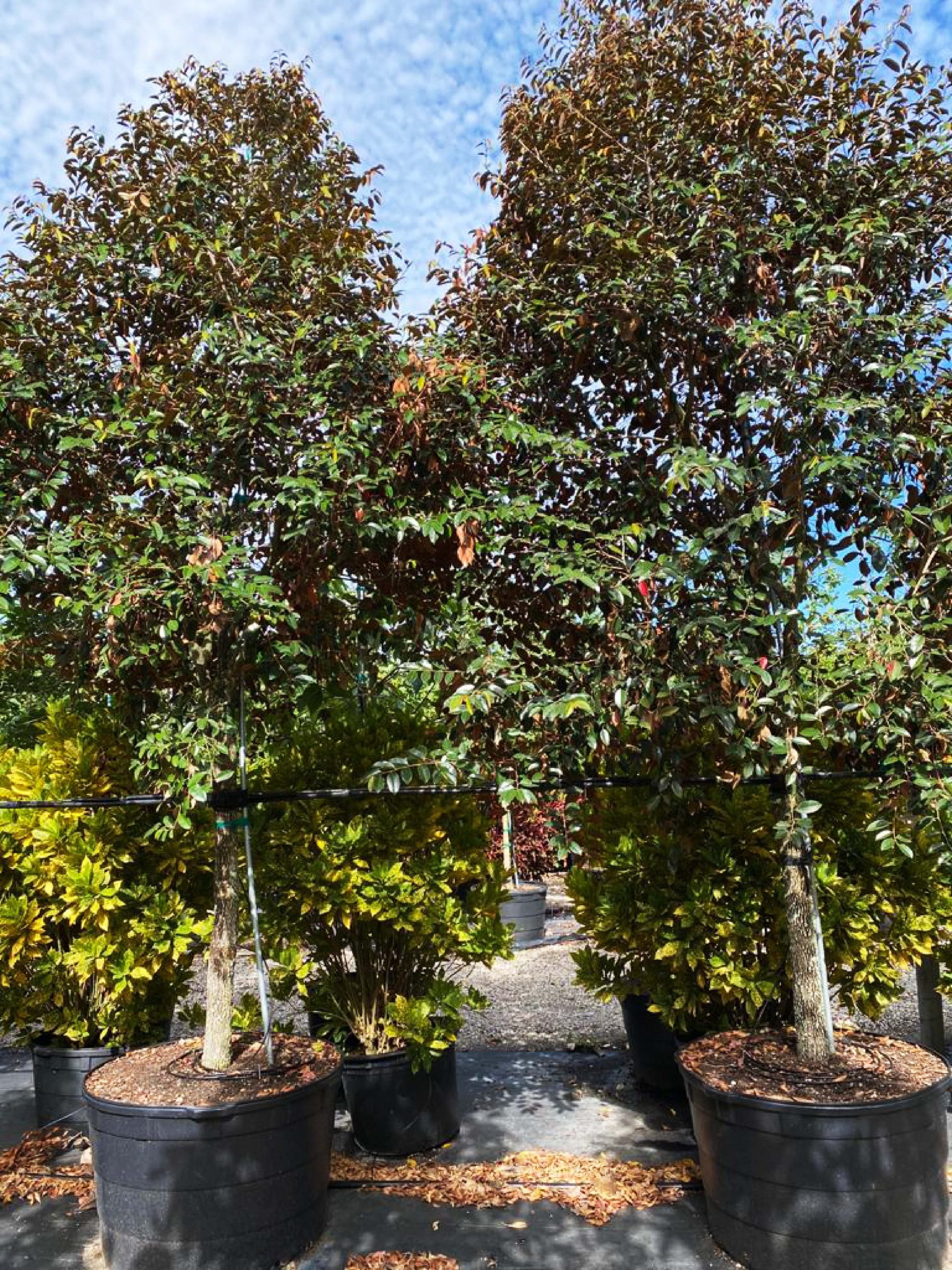Description
Satin leaf tree description
Chrysophyllum Oliviforme (Satinleaf tree) is a medium-sized tree or shrub native to Florida. Satinleaf reaches a height of up to 15 feet, but is twice as tall under ideal growing conditions. It has a moderately dense oval to pyramidal crown with slightly drooping branches. Also, the trunk is showy with a thin reddish-brown scaly bark.
In addition, its simple glossy leaves are alternate, elliptic to oval, dark green above and bright copper color beneath. During a breeze, leaves give an attractive two-tone effect. Also, its small flowers are borne in axillary clusters. The inconspicuous, creamy yellow to white blooms are 3/8 inch and have 5 petals and 5 stamens.
Furthermore, the elongated, fleshy fruits are borne in small groups and are edible. They transition to a dark purple when ripe. The fruit resembles olives with whitish flesh and contains several black seeds. Propagation is by seed or semi-hardwood cutting.
Chrysophyllum oliviforme cultivation
The heartwood is reddish, heavy, and hard. Satin leaf tree does best in fertile well-drained clay, loam, or sandy soils. Pruning is needed to maintain tree form and shape shrubs. Chrysophyllum Oliviforme (Satinleaf) has outstanding foliage and has applications for lawns, patios, as a screen, shade, or specimen tree, along sidewalks and residential streets. It is also ideal for a native plant garden.
Other common names for Chrysophyllum Oliviforme are: Palo de Canela, Damson plum, wild star-apple, saffron-tree, Caimitillo, Caimitillo de Perro, Camitillo Cimarró, Teta de Burra, Macanabo, and Caïmite Marron.
🌳More popular and beautiful plants: Cinnamon Bark tree































